London, September 6, 2023 – Members from across our clockmaking, sales, planning and management teams came together to tour of some the company’s most significant clocks in London. The highlight of the tour being the visit the St Pauls’ Cathedral to see the 1893 clock made by the then John Smith & Son.
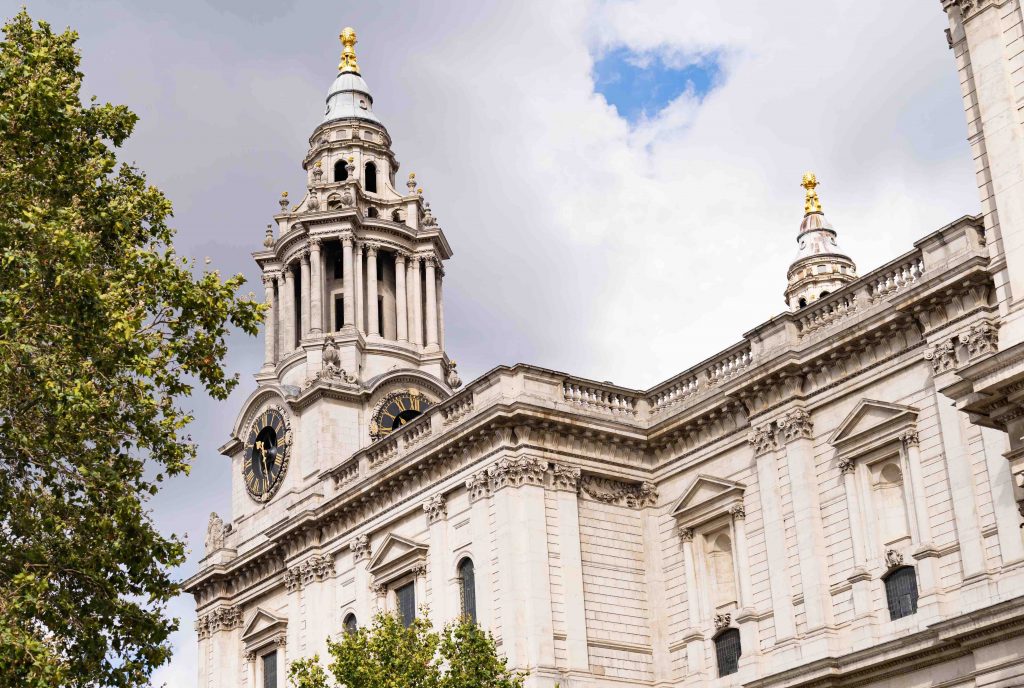
Historical Insights from the Smith of Derby Archives
- 1286: Historical records indicate the presence of a functioning clock within the old St. Paul’s church.
- 1667: The catastrophic Great Fire of London resulted in the destruction of the original cathedral.
- 1709: Langley Bradley of Fenchurch Street installed a clock in Christopher Wren’s new Cathedral. Initially designed to run autonomously for a week without winding, it required daily attention. In 1716, Wm Wright & Richard Street made alterations to enhance its power and removed the minute hands.
- 1720: Wright & Street supplied a new clock.
- 1893: A significant chapter in the clock’s history unfolded as Lord Grimthorpe, the notable designer of ‘Big Ben,’ and Dean Gregory commissioned a new clock from John Smith & Son, later known as Smith of Derby Ltd. The clock, costing £654.00, included an annual maintenance contract of £20.
- The St. Paul’s clock shares design and size similarities with Westminster’s renowned clock (‘Big Ben’) while incorporating advancements drawn from the experience gained during the crafting of ‘Big Ben’ 34 years earlier in 1859.
- Originally intended to strike the hours on the colossal Great Paul bell, weighing 16.5 tons, it was subsequently decided to use the 6.5-ton Great George bell to safeguard the tower.
- During World War II, the chimes were temporarily silenced by disconnecting them from the clock mechanism to minimize any risk of attracting enemy attention. The clock narrowly avoided destruction during an air raid in 1940.
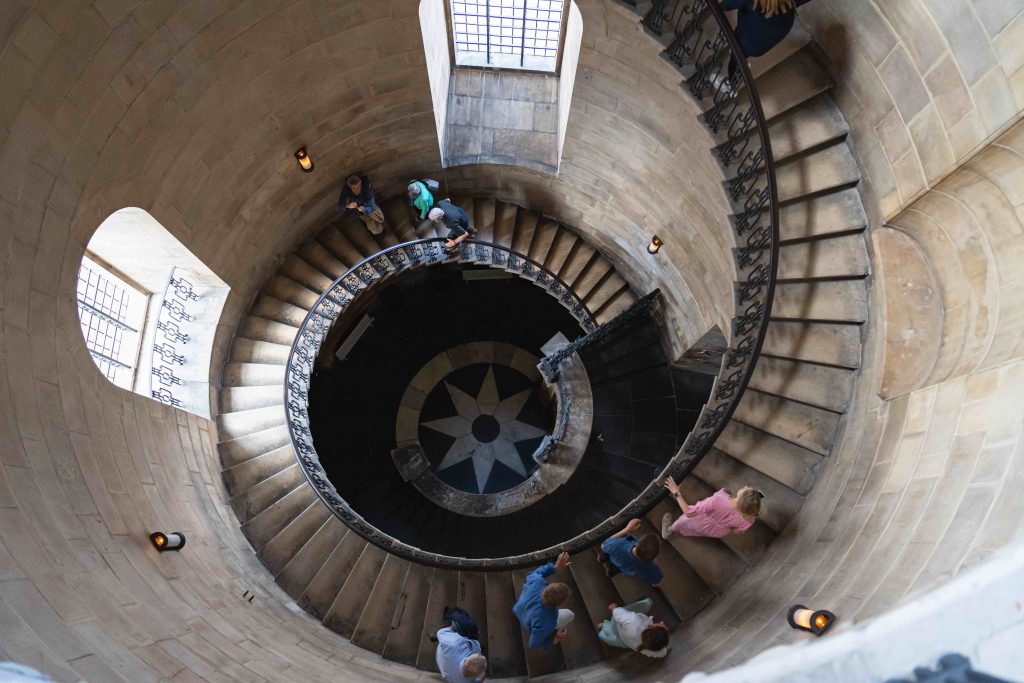
The team ascend to the clocktower
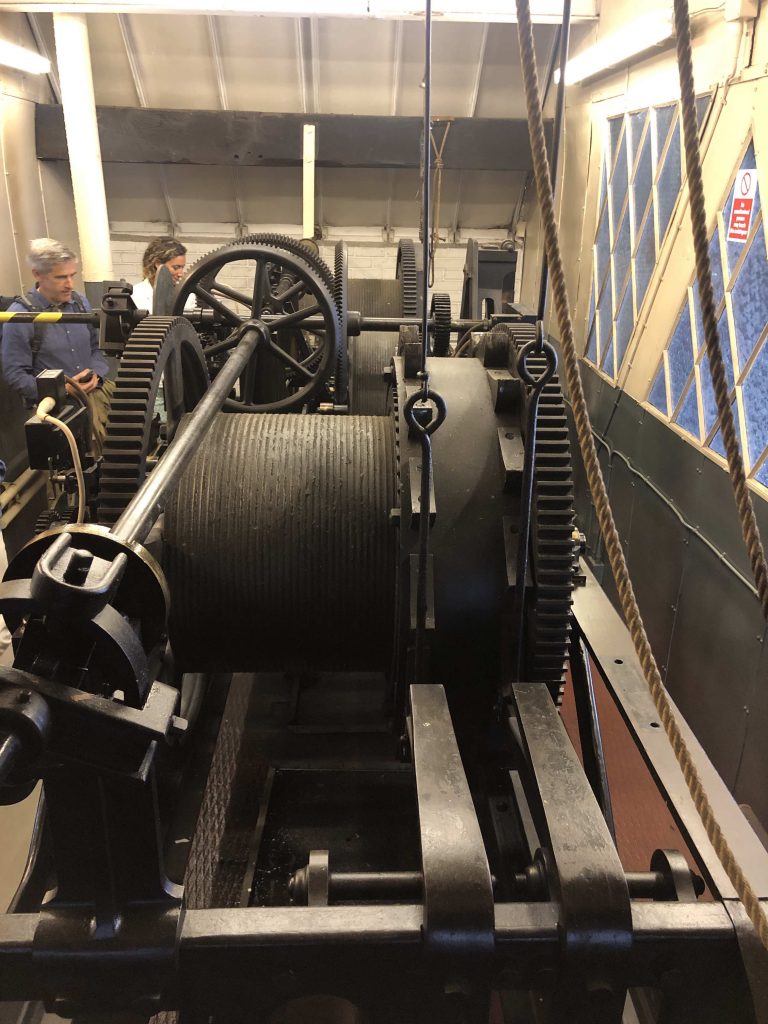
The St Paul’s Cathedral Clock
- Principal Details: The clock features three dials, each measuring 17 feet in diameter, situated within the Southwest tower of the Cathedral. The hour hands span 5 feet 6 inches overall, while the minute hands extend to 9 feet 6 inches. The main clock frame measures 19 feet in length, with the main frame support girders extending 22 feet.
- It incorporates Lord Grimthorpe’s innovative double three-legged ‘gravity’ escapement, a zinc-steel compensated pendulum and rod measuring 14 feet in length and weighing 7 hundredweights, and a 1927 modification involving the transition from vertical flies to horizontal ones.
- In 1969, an autowinding mechanism was introduced to the time part, offering a 36-hour reserve and a direct motor drive for the strike and quarter chimes, eliminating the need for daily winding.
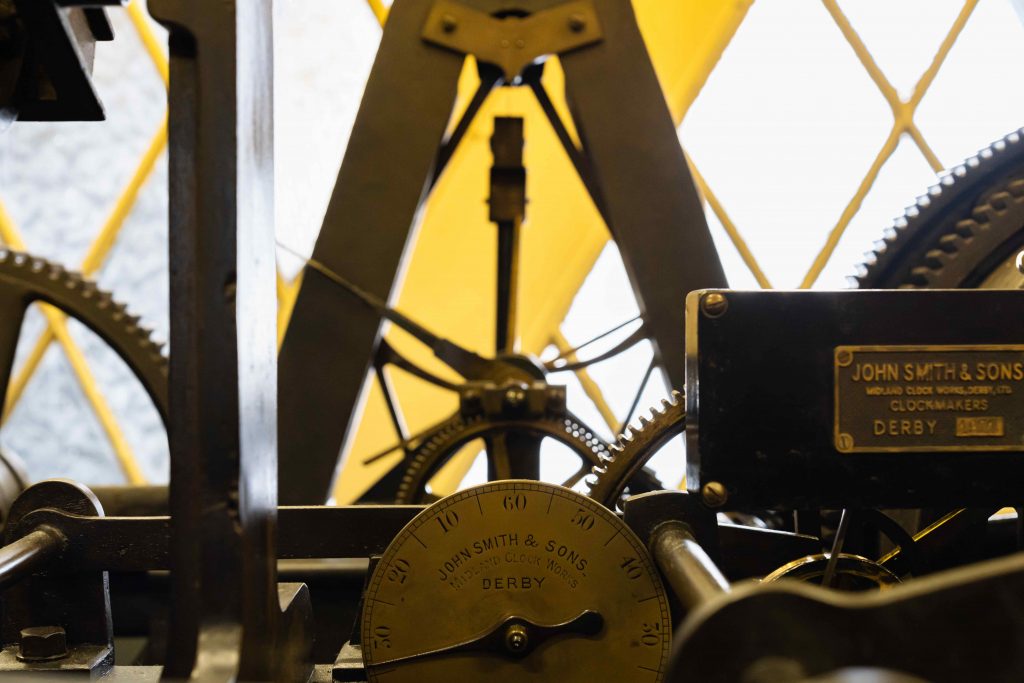
Lord Grimthorpe’s innovative ‘Double three-Tegged ‘gravity’ escapement
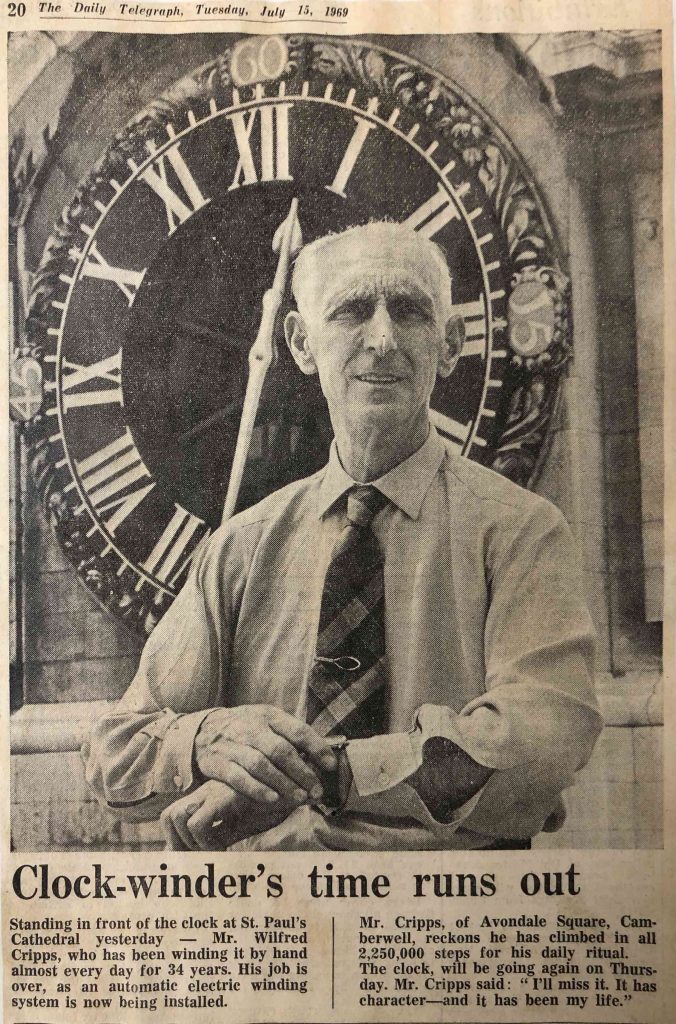
Mr Wilfred Cripps, who wound the clock by hand almost everyday for 34 years
Wilfred Cripps: A Legacy of Dedication
Wilfred Cripps, the long-serving clockwinder, played a pivotal role in maintaining the St. Paul’s Cathedral Clock for over three decades. His meticulous efforts included ascending the clock tower’s 200 steps approximately 11,000 times. Mr. Cripps meticulously hoisted the 9-cwt hour weight with 450 turns on the handle, followed by 35 turns on the pendulum handle.
In a display of precision, Mr. Cripps, known for his unwavering adherence to winding the clock at precisely 10 am, adjusted his schedule to preserve the clock’s intricate mechanisms. On his final day of winding, he expressed his sentiments, stating, “It possesses character; it has been my life.”
Throughout the years, the clock has served as a temporary substitute for ‘Big Ben’ during BBC broadcasts.
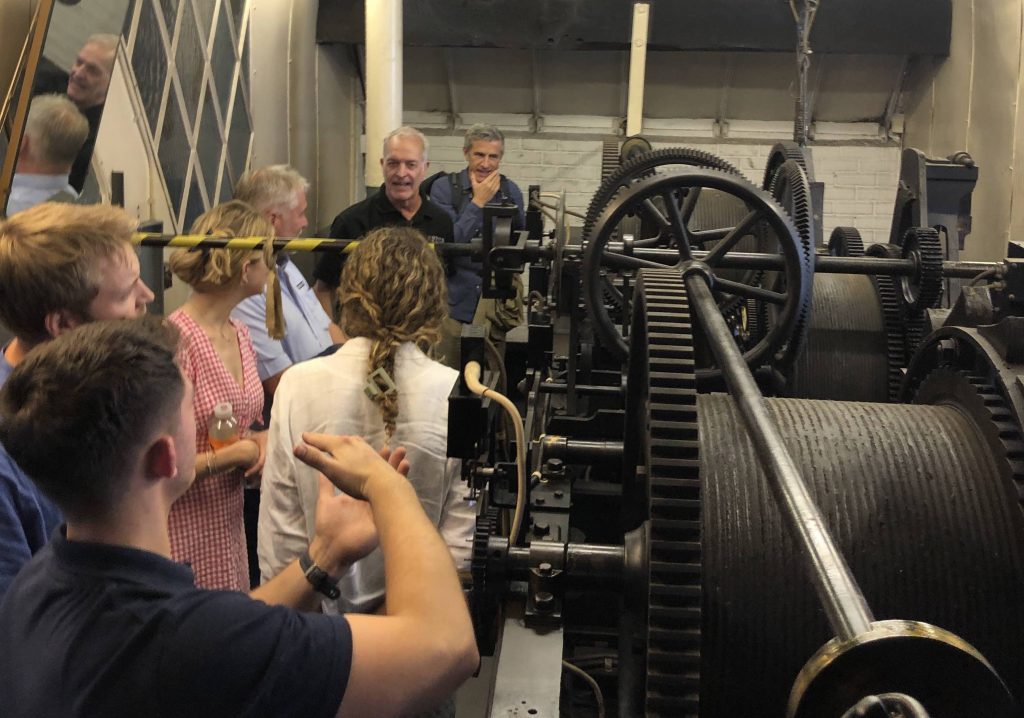
Smith of Derby: A Legacy of Maintenance and Care
Notably, Smith of Derby has been entrusted with the annual maintenance of the St. Paul’s Cathedral Clock since 1893, ensuring the preservation of this historic timepiece that bridges the past with the present.
Stay tuned for further updates and explorations into the realm of timekeeping and clockmaking excellence by Smith of Derby.
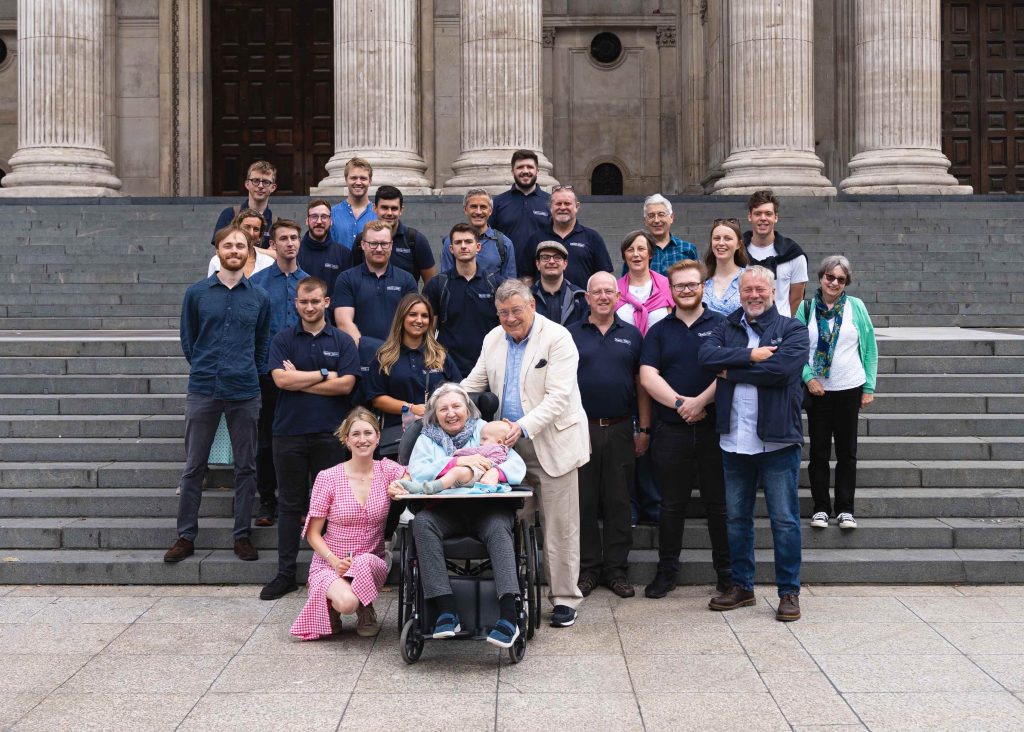
Company and Smith family members (4th, 5th and 6th generation) on the steps beneath St Paul’s